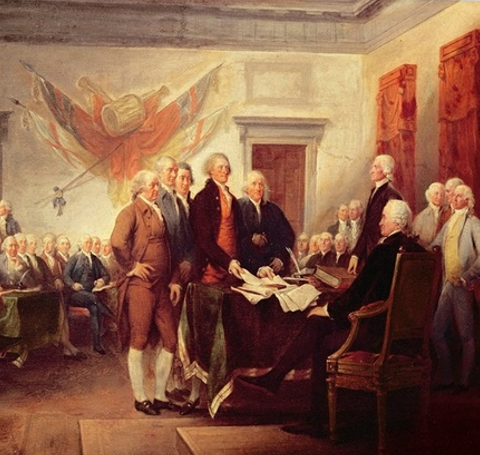Other articles in the series include: Are Utahns Uniquely Drawn to Pornography?, Do Utahns Struggle With Body Image More Than Others?, Are Utahns More Depressed than Everyone Else?
Are LGBT Latter-day Saint youth in Utah at a higher risk of suicidal thoughts, plans, and attempts than their non-Latter-day Saint peers? According to two recent studies making use of a large, representative dataset, the answer is no. In fact, researchers find that LGBT youth in Utah who are not Latter-day Saints show almost twice the incidence of suicidal thoughts and behaviors than those who are Latter-day Saints. These effects are significant, persist after controlling for demographic variables, and appear to be partly mediated through lower levels of family conflict, depression, and substance abuse among Latter-day Saints.
Before digging into these findings, it’s worth taking a step back to place them in context. In December 2014, a national media outlet printed an off-the-cuff remark from an LGBT advocate, who claimed that “Mormons have the highest rate of gay suicide in the country,” along with several other statistical claims about LGBT youth suicide in the Church. This interview understandably sparked alarm and gave additional shape to an existing narrative about gay youth suicide in Utah that dated at least to 2012, following a nationally publicized suicide in Utah. The idea that there was an “epidemic,” as some put it, of gay youth in Utah committing suicide because of the Church’s conservative beliefs became widely accepted.
It’s hard to overstate just how entrenched this narrative became online during the 2010s. Conversations among Church members and critics online that touched on sexuality or same-sex marriage would inevitably arrive at the topic of youth suicide. Church members who attempted to engage on these questions, however meekly, were accused of raising suicide rates simply by believing in and affirming Church teachings.
The Church of Jesus Christ of Latter-day Saints itself felt compelled to take these claims of epidemic suicide seriously, responding both through numerous private meetings with advocates and through public gestures, such as donating to an LGBT support group for suicide prevention training. LGBT youth in Utah who are not Latter-day Saints show almost twice the incidence of suicidal thoughts and behaviors than those who are Latter-day Saints.
Michael Staley, who works at the Utah Office of the Medical Examiner and is himself gay, and not a member of the Church, has repeatedly thrown cold water on key claims of the narrative:
Despite a general perception that many of Utah’s youth suicides arise from intolerance toward LGBT people promulgated (though not necessarily intentionally) by teachings of The Church of Jesus Christ of Latter-day Saints, the state’s suicide prevention research coordinator says that may not be the case.
“There’s no data to show that, period,” says Michael Staley, who works in the Utah Office of the Medical Examiner and is the first person who would know, since he leads an effort to collect, compile and analyze suicide information from around the state. …
While the Centers for Disease Control and Prevention reported in 2016 that LGBT youth die by suicide at double the rate of their non-LGBT peers, Staley says data specific to Utah so far doesn’t validate the sexuality-religion narrative. “The people who are driving that narrative are going to be disappointed,” Staley says, while at the same time recognizing that “theoretically, it makes sense.”
Proponents of the narrative point to a 2009 study finding that LGBT youth from “highly rejecting” families are more likely to have attempted suicide. No doubt this is true. But the study, conducted on a small convenience sample from California, makes no attempt to study the effect of religion or the Church of Jesus Christ specifically, never mentioning religion at all. Others have offered circumstantial evidence, pointing out, for example, that the suicide rate among youth in Utah rose steeply beginning in 2013. This is true, but these data cover all youth, and it is unknown whether the increase was driven by LGBT youth, straight youth, or both. Nor do Church teachings seem a likely explanation for the sudden rise: the Church’s purportedly suicide-causing teachings long predate 2013, while California Proposition 8 (2008) and the November 2015 handbook policy, both purported to be triggers, were either too early or too late.
While the key claims of the Latter-day Saint LGBT suicide narrative are unsupported and in some cases, as new research suggests, roughly the opposite of the truth, there has been at least one salutary effect of such sustained attention to the problem: Utah is becoming a leader in data collection on youth suicide.
“We’re building the most comprehensive database of information about suicide decedents around. That’s huge,” Staley says in an interview with QSaltLake Magazine. In fact, it’s the first undertaking of its kind in the country and, because of the organization of the state’s medical examiner’s office, it’s possible in Utah and only a handful of other states. Staley calls the effort “progressive” and “pioneering.”
The new research I referred to at the beginning of this article makes use of excellent survey data collected by Utah state agencies: the large and representative 2019 SHARP dataset covering youth in middle school and high school.
The first paper, by James McGraw, Meagan Docherty, Jay Chinn, and Annette Mahoney, published in Psychology of Sexual Orientation and Gender Diversity, investigates the extent to which LGBT and Latter-day Saint identity predict suicidal thoughts and behaviors (STB) among young people in Utah. STB is an aggregate measure, summing up indicators for the presence of suicidal thoughts, plans, and attempts in the previous 12 months (the maximum value of STB is thus 3).
The relevant figures from the paper are surprisingly stark. Latter-day Saint LGBT youth had an average STB value of 0.57, while non-Latter-day Saint LGBT youth had an average of 1.09—nearly twice as high. The difference between these two means was highly statistically significant. For reference, non-Latter-day Saint heterosexual youth had an average STB value of 0.42, while Latter-day Saint heterosexual youth had an average of 0.23.
The paper also found statistically significant differences between Latter-day Saint LGBT youth and their non-Latter-day Saint peers on several other markers: the Latter-day Saint youth were less likely to be experiencing familial conflict, depression, substance abuse, or self-harm, and reported being closer to their parents, on average. All these differences, thanks to the large sample, were statistically significant. These findings are descriptive, however, and are not controlling for other variables such as race or sex. When it came to depression, LGBT youth benefited more from being Latter-day Saints, relative to having no religion, than straight youth did.
Perhaps most striking, though not emphasized by the researchers, are findings on depression revealed by an interaction effects model. Interaction effects can reveal how the size and direction of the effect of one variable on the outcome varies with another variable. The effect of LGBT identity on depression, controlling for demographics, family connections, substance abuse, and community connections, was estimated to be positive for all religious groups, but this effect was significantly smaller among Latter-day Saint youth compared to youth who indicated their religion as “none.” To put it another way, when it came to depression, LGBT youth benefited more from being Latter-day Saints, relative to having no religion, than straight youth did. In fact, straight Latter-day Saint youth had higher estimated rates of depression than Catholics and Protestants, once controls were included—the same was not true of gay Latter-day Saints.
One possible explanation of these findings is that the LGBT youth most likely to be harmed by Church teachings are also those most likely to have already left the Church, thus pushing rates of suicidal thoughts and behaviors lower in the Latter-day Saint group and higher in the non-Latter-day Saint groups (in other words, introducing what is called “survivorship bias”). The authors of the BYU study investigate this possibility using a second survey dataset that includes information about suicidality among LGBT youth who have disaffiliated from the Church. They conclude that their main findings hold even after adjusting for this information.
There remain limitations and potential sources of statistical bias in these papers, as is always the case with observational, cross-sectional studies. Inferring causation in the social sciences can only be done cautiously and provisionally. It should also be kept in mind that suicidal thoughts, plans, and attempts, the subjects of these studies, are distinct from completed suicides.
A final caution is that population measures cannot tell individual stories. For illustration, consider vaccines that are, on the population level, very safe. The overall safety of a vaccine doesn’t mean no one has ever been harmed by it. Similarly, even if it turns out participation in the Church has a protective effect against suicide for gay youth overall, there would still be some youth for whom this is not the case, or for whom the effect is opposite, for a variety of reasons specific to family, ward, and individual circumstances. On the other hand, individual stories, while valid, cannot tell us about rates of suicidal behavior across different religious groups, just as an individual’s adverse reaction to a vaccine does not prove that vaccines are unsafe. Statistics and individual stories are both valid and should be seen for what they are. Both rules and exceptions exist.
Despite these caveats and cautions, the findings of these two studies tell us something important about the experiences of LGBT youth in Utah. They refute claims that higher rates of suicidal thoughts and behaviors among LGBT youth in Utah are uniquely or disproportionately Latter-day Saint phenomena. And the negative statistical relationship observed between Latter-day Saint identity and suicidality among LGBT youth, even after accounting for demographic variables, makes the narrative of Church-caused youth suicide much less plausible than before. To the extent there is a burden of proof, it lies on those asserting that Church teachings are causing higher rates of suicidality among LGBT youth.
Other, more plausible, conjectures could be made. Perhaps rapid secularization has contributed to rising suicide rates among American youth, including LGBT youth. Perhaps the rise in youth suicides in Utah over the last decade is partially explained by a rapid cultural shift, within the Church (as with society as a whole), toward prescribing antidepressants to minors (black box warnings on antidepressants prescribed in the US warn of increased risk of suicidal thoughts and behaviors in young people relative to placebo). Maybe progressive secular ideology, which has been growing in popularity, is harmful to young people, causing depression and suicidality. These conjectures are, I would argue, worth investigating, but they remain conjectures. They shouldn’t be asserted without caveats, let alone repeated without verification by national media outlets—there has been enough of that.















